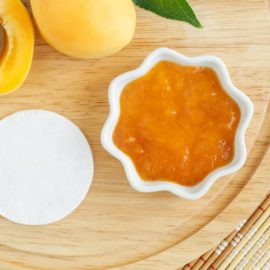In the context of the ongoing pandemic, consumers are turning to BPC to escape from the woes of the daily news cycle. Self-care in center stage, as people look for moments to themselves to feel good, look better, and enjoy some ‘me time’. According to a survey by Mintel, 36% of American Generation Zers are spending more time on self-care routines like long baths, skin renew treatments, and extra skin care steps like sheet masks and scrubs.
The sensory aspect of these routines or rituals is essential to their rejuvenating effect. Products that tap into comfort, nostalgia, and pleasant scents and textures are increasingly popular – right now, 55% of women aged between 18-44 in the United States want products that make their skin smell good and feel smooth (Mintel, 2020). Equally, natural and sustainable products add to this feel-good factor, combining beauty and ethics to enhance mental well-being.
As women look to add that extra caring step to their skin care routine, developing new, fresh-scented scrubs and exfoliators should be a priority for BPC brands. Here, we look closer at the exfoliation market and how to adapt to these exceptional new dynamics.
Content
The rise of the chemical peel
The chemical peel has been one of the hottest skin renew treatments of recent years. In 2018 alone, 400,000 professional chemical peels were performed, making it one of the fastest-growing non-surgical treatments worldwide (Mintel, 2018). This popularity led to at home liquid exfoliators to commonly adopt the word ‘peel’ on their labeling, with the inclusion of ingredients termed ‘acids’.
When it comes to the skin, you’d automatically assume that acid was something to steer away from; however, this needn’t be the case. In fact, educating consumers about the benefits of peels can persuade them to integrate a peel-positioned product into their routine. For instance, peels can smooth the skin surface and activate the cell renewal cycle, while increasing penetration for products applied later in a skin care routine. With this education, brands can meet the demand for refreshing skin renew self-care products, while leveraging their popularity in the professional treatment market.
A natural approach to skin renew exfoliation
As introduced, despite the growing prevalence of ‘acid’ claims on exfoliator labels, many consumers remain wary. For instance, glycolic acid is an ingredient recognized by 69% of US women who use beauty products, but over half of these women do not know much about it (Mintel, 2020). To drive education about the benefits of acid exfoliators and reassure health-conscious consumers, brands should take a natural approach.
For instance, the AHAs present in fruit acids have several skin renew benefits, combining a smoothing effect with a refreshing scent. By positioning an acid as a naturally-derived, clean beauty ingredient, brands can reach the powerful conscious consumer segment. After all, many consumers tend towards ingredients they recognize, with 56% of women looking for ‘superfood’ ingredients in the beauty products they purchase.
The exfoliating activity of papaya extract
To meet these overlapping market trends, brands need to combine three things: the promotion of self-care, to encourage the uptake of a new skin care step; references to the increasingly popular chemical peel trend; and a natural re-imagining of this tendency, to reassure clean beauty consumers.
Provital has the active ingredient for this multi-layered set of needs. Our papaya extract, produced from the fruits of Carica papaya, is developed to gently accelerate skin desquamation and activate the natural skin renewal cycle. With gentle AHAs that act on the skin at the stratum corneum level, this ingredient moisturizes while it exfoliates, leaving the skin feeling supple, smooth, and hydrated. With all these benefits, this ingredient combines the care and renewal that all consumers.
No comments yet
There are no comments on this post yet.





Leave a comment